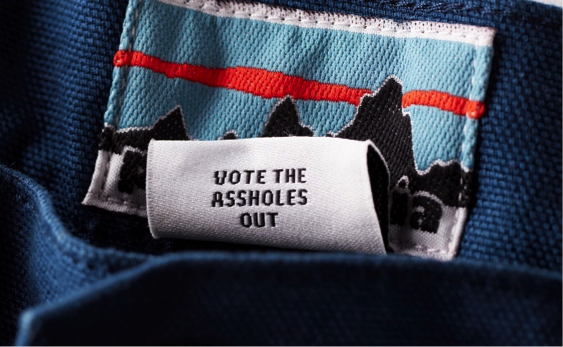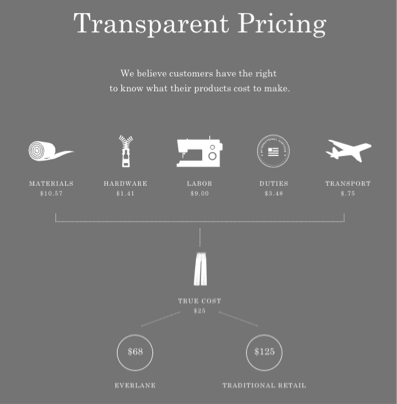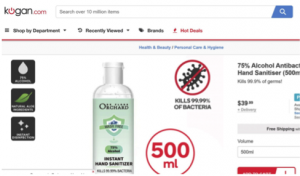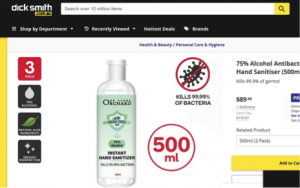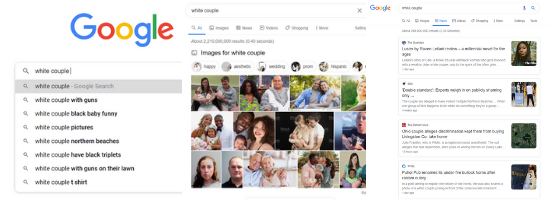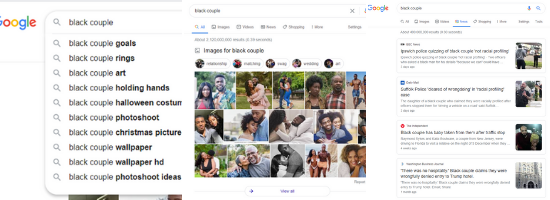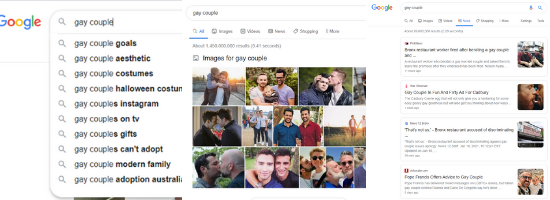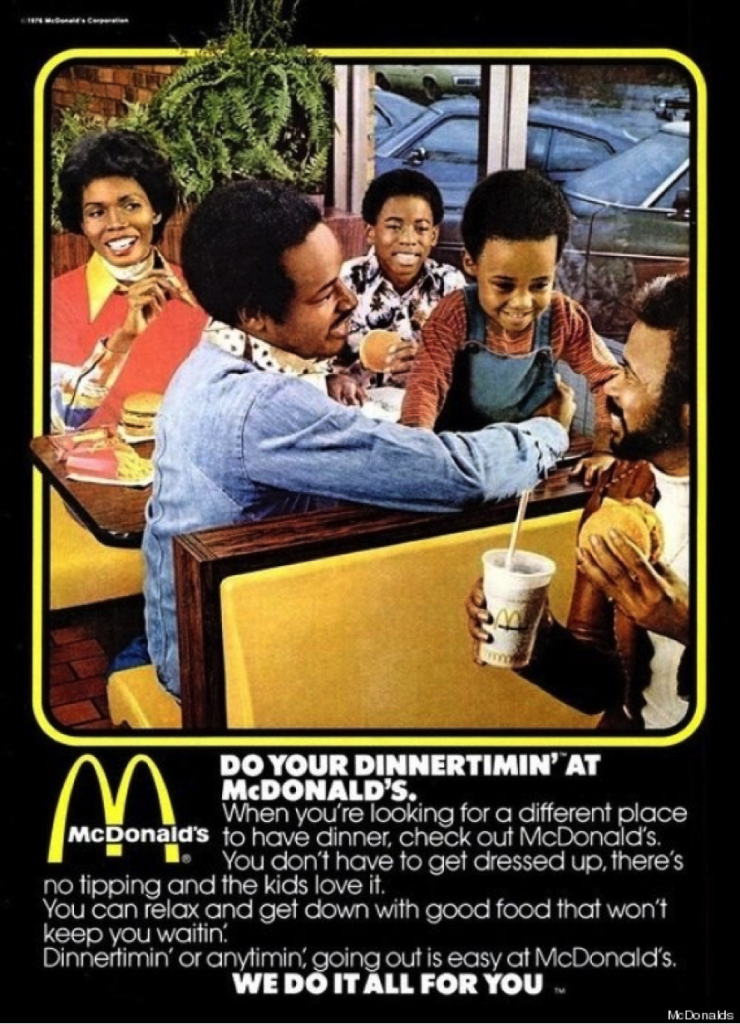Social justice and brands: the good, the bad and the ugly of a narrative oscillating between rightful overcorrection and total madness
Share
This is part two of a two-part article. Read part one here.
According to the theory of mediatisation, which argues political and social discourse are shaped by mass media, the narrative shift from disaster to regeneration almost certainly will need to begin with the media. [quote style=’1′ cite=”]In normal situations brands wouldn’t usually be advised to enter the political discourse, but what we’re living is far from normal. Still, how far is too far? Culture (mediatised or not) may be too big for brands to influence, but, on the other hand, the media business is by and large funded by advertisers.[/quote]
The ‘actions, not ads’ calling is as relevant as it can be. Consumers have become widely aware and more sensitive to gimmicks and hypocrisy from ‘brandwashing’ that ultimately doesn’t make much of a difference. But on the other hand, brands, activist groups and heightened expectations of corporate social responsibility, might be going too far by pushing militant agendas that risk emphasising our social divide. At present, customers can witness three markedly different brand behaviours:
The “good” ones ‘do good’ by doing well: Patagonia and Everlane are two best-in-class examples of brands underpinned by business models that equalise profit with purpose.
Others, like Coles and Woolworths in Australia, created new shopping schemes, helping people comply with isolation rules as well as maximising the commercial opportunity it afforded them. These brands may not be as impactful as NGOs or government – and probably don’t need to be either – since they still need to make a profit to exist. But on the other hand, these companies have managed to maximise profit through purpose legitimising its social enterprise status or enhancing its corporate social responsibility. At present, this is the best we’ve got.
The “bad” ones are brands profiting from the crisis, not with it.
Bupa tried to promote its health insurance alongside advice on the importance of being prepared. But using the image of an empty shelf (and the contentious issue of toilet paper) during the pandemic could be interpreted as taking advantage of fear. Paralleling shortages in essential products to health insurance policies could encourage ‘panic buying’ among those who don’t have or can’t afford private insurance.
Really disappointing @BupaAustralia. You should not be taking advantage of anxiety about COVID-19 to push private health insurance. People who need help in this situation are much more likely to get it from our excellent public health system. pic.twitter.com/WM70YCmeL3
— Alan Kirkland (@AlanKirkland) March 9, 2020
Melbourne-based ecommerce brand Kogan could have been accused of taking advantage of the crisis when it charged $40 for a 75 percent alcohol antibacterial instant hand sanitiser (500ml) that it claimed kills 99.9 percent of germs. A visit to the Dick Smith website, which is 100 percent owned by Kogan, revealed that a three-pack of the same sanitiser was being offered for $90.
The “ugly” ones are brands that demonstrably seem to be doing what’s right, good or virtuous but – inadvertently or not – worsen the problem or create new ones.
These are the brands that decide to go against what’s true, empirically proven and scientifically backed in order to promote worldviews that aim at overcorrecting social issues. Instead of advancing the social discourse, they end up dividing us even further. Google, for instance, tweaked its algorithm through what is called Machine Learning Fairness (MLF). Through MLF the company is making a concerted effort to drive the diversity agenda in a way that whiteness is framed as the root cause and enemy of diversity itself. Below are print screens of three different searches, the first for ‘white couples’, the second for ‘black couples’ and the third for ‘gay couples’, can you spot the difference(s)?
Without having to be too overly descriptive, images of black and gay couples were accurate overall and generally positive. News related to these two groups was either ephemeral or related to discrimination they suffer. The search bar was pre-emptive of neutral terms. In the case of white couples, the images were rather inaccurate, emphasising mixed couples and white couples with black babies and other variations that wouldn’t intuitively or scientifically answer the ‘white couple’ search query. News that appeared related to white couples was negative, relating to purported racism and one to Trump, with overly negative, racist and unscientific terms (i.e. white couple has black triplets).
[quote style=’1′ cite=”]In this dystopic present of social justice, the manipulation of history, science and culture is reminiscent of a famous line from George Orwell’s 1984: “Who controls the past controls the future: who controls the present controls the past.” This makes the embedding of futures literacy into the marketing industry ever more important, as noted by Metafutures’ Dr Ivana Milošević: “Who controls the future controls the present.” [/quote]
The good brands are certainly more virtuous, which does not mean they become more successful businesses, but by adopting more sustainable practices they are more likely to succeed in an environment where sustainability becomes an operating requirement. Not dodging your taxes may put you at the entry level of good brands. Reducing carbon dioxide emissions from your supply chain, and providing fair working conditions for employees and suppliers can solidify a place among them. Becoming a B-Corp, carbon-negative, circular and culturally progressive, with all that aligned to your brand’s positioning, will bring you closer to the likes of Patagonia and Everlane.
The bad brands understand the rules of the game and play to win in the short term: ROI first, all else an afterthought when and if ‘PR-able’. To be a bad brand, prioritise money above all else. Play to people’s sense of morality without backing that up. Just be dirty.
Ugly brands, however, are in an extraordinarily complex space, that of social justice. They seemingly want to do good – and well – but somehow they turn positive intentions into dangerous messages and actions. How come? Well, it’s … complicated, in a nutshell, this means that individual identities are suppressed in favour of collective identities with arguments that are beyond reproach and with a focus on equality of outcomes rather than equal opportunities. Such an idea comes with myriad problems as explained on a PragerU video and eloquently alerted by Douglas Murray on a Rubin Report interview.
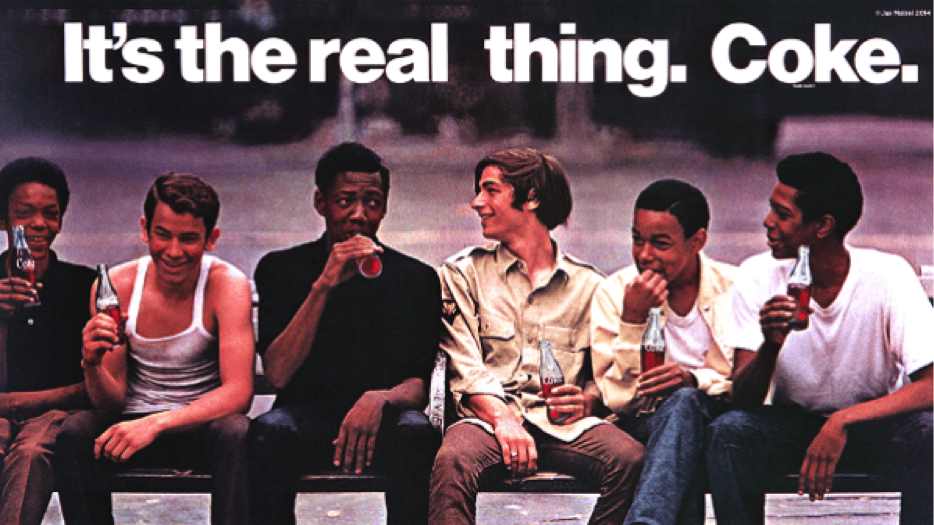
“Boys on a Bench” poster captured by photographer Jay Maisel in New York City that shows Caucasian and African American youngsters gathered on a segregated bench and touching their knees.
Perhaps that had to do with the way many agencies went about communicating diversity in advertising. Take McDonald’s, for example, appealing to African American consumers specifically meant, in part, ads such as ‘Makin’ it’ and ‘Dinnertimin’ which made extensive use of ‘g-dropping’, further enforcing stereotypes.
Charlton McIlwain, an associate professor at New York University who specialises in race and media, said in an email that he views these tone-deaf ads as “the outcome of [advertisers] trying to do the right thing, but not necessarily knowing what that meant.” White-dominated ad agencies lacked a general familiarity with black people and black communities, leading them “to design ads that were racially naive and necessarily relied on stereotypes for lack of any other information.”
Matters of Black Lives in Media: Towards Truly Inclusive Futures by Sophia Bazile
If mediatisation is a key driver of culture, it has been both a cause and a catalyst for further perpetuating racial and systemic inequalities. One can comfortably say that Black people have been both under and misrepresented, resulting in the undermining of their existence, value and contributions to culture’s mainstream narrative. For example, some Black women’s struggles with self-love and image have been improved by Black beauty brands that effectively challenge non-inclusive standards of beauty. Additionally, when the few Black ‘role models’ presented in media are rap stars and professional athletes, Black males internalise that there are limited options for success and positive recognition as well as further propagating the myth of ‘Black Exceptionalism’.
Back in the early 70s social divisions and exclusion were even more apparent. Despite concerted attempts of portraying a multicultural America and better targeting the African-American consumer, big brands like Coca-Cola and McDonald’s were not enough to ignite change.
Exclusion from and misrepresentation in media also gave rise to Black Twitter, the Black Lives Matter movement and commitment to supporting Black-owned banks and businesses. These serve as just a few examples of how many believe that to effectively advance in what some would consider a systemically racist society, Black people must create and sustain their own opportunities for economic and cultural development.
The problem worsens when looking from the angle of misrepresentation. It is rather common to see overtly racist depictions of Black people actively disseminated through different media and even in psychology textbooks. From the hypersexualisation of Black women to portrayals of Black men as thugs, fools, and criminals, the causal links and their widespread effects thwart efforts at advancement and have proven to be downright dangerous and deadly. From Black men and women internalising these stereotypes to the detriment of their health and well-being, to experiencing persistent medical racism, and higher rates of police brutality – these stereotypes not only serve to diminish Black peoples’ sense of personhood but ‘invite’ external threats to their safety. In sharp contrast, studies have shown that watching television causes an increase in self-esteem for white boys whom Hollywood predominately casts as its heroes.
For the non-Black individual, when life-experiences have not allowed for real encounters, interactions and relationships, media will often become THE source to informing their understanding about Black individuals and communities.
Positive representations of Black people, males especially, are lacking in film and media with the exception of sports and music. This could infer why ‘patriotic fans’ have gotten angry about athletes using their platform to take a stand against racism and police brutality. The image being painted is not too dissimilar from that of slaves, where athletes are mere commodities, there for general consumption and enjoyment. Similar underlying anti-black attitudes explain the uproar that ensues when Black actors are cast as Marvel and Disney characters. These days, an increase in programming more reflective of the true richness and diversity of Black lives and experiences can serve as a resource for unlearning biases and cultivating greater empathy; that is when people can move past their initial discomfort and disinterest to watch them.
Dr. Ralph Bunche described globalisation as the theme of using inequalities to organise peoples politically and economically. Thus there are many past and present examples of how anti-Black attitudes still thrive in a global context. In fact, in 2014 the United Nations proclaimed 2015-2024 ‘The International Decade for People of African Descent’. Yet, it’s 2021 – seven years in – and most people, Black people included, would have likely never even heard of this initiative until reading this article.
Having witnessed how recent Black Lives Matter protests reverberated around the world and resonated with non-Black people clearly demonstrates that systemic inequality and oppression are not endemic to the United States and many countries will have to eventually face their own reckoning. We can truly begin to finally eradicate the global scourge of racism and oppression in a renewed, re-energised Black narrative.
As to our new unifying narrative, it must be characterised by a spirit of collaboration and empathy, our true nature as humans – a new way of relating, organising, and governing that is post-capitalist. Civilisation would share a global brain and enjoy the use of collective intelligence and a global knowledge commons in a more cooperative world characterised by equal protection and opportunities to thrive and flourish as individuals and collectively.
We also each have the power and responsibility to take our own steps in becoming more ethical than the societies we grew up in. Therefore, it’s important to start taking actions from within our ‘zones of influence’ and question how to shift personal narratives to better align with our individualities within the entire ecosystem we are a part of.
As Sylvia Wynter professes there is much work to do here in the present as we aspire to a truthful collective understanding. Meaningful retribution and inclusivity will finally help us to finally realise and flourish in our long-awaited ‘re-enchantment with humanism’.
Everybody seems to want a better world, with a more diverse and inclusive workplace, so why is it so hard for brands to advocate for a fairer society?
The social justice movement, be it in relation to gender, race, the environment or other inequities in our lives, focuses on the struggles of the power relations that are formed through interactions in these spaces. But human relations are much broader than tensions between those on top and those below, regardless of the context. In general, human relations will also involve love, care, compassion, learning, attraction, collaboration, enjoyment and so much more where power is not necessarily a concern.
When it comes to consumption and what it represents in a capitalist consumer society, however, power becomes a more central factor. That is because consumption involves knowledge acquisition and actual usage – not simply shopping and purchasing – and therefore is intricately bound up with the practices, power relations and discourses of everyday life.
The idea of conspicuous consumption – that we buy what we buy with the intention of publicly displaying economic power as a means of either attaining or maintaining a given social status – was originally coined by sociologist and economist Thorstein Veblen in 1889 when his book The Theory of the Leisure Class: An Economic Study in the Evolution of Institutions was published. In the 20th century, evolutionary psychologists took consumption further by linking it to critical evolutionary traits, like mating, belonging and signalling, and how brands can tap into our reptilian brains. Now, in the early decades of the 21st century, transactions have acquired new meaning, when reframing the marketplace as ballot, and dollars as votes by consumers ‘voicing’ their concerns about societal issues.
[quote style=’1′ cite=”]In summary, consumption helps produce power relations, while also being informed by them. And behind that is an industry promoting and organising consumption not only in ways that intervene with society but in the active generation of new types of societies altogether.[/quote] For instance, the alternative lifestyles of the 1960s in the US were eventually ‘co-opted’ by the marketing apparatus and converted into ‘lifestyle consumption’. This is a compelling example of how capitalism works as an affective and emotive catalyst that transforms the energy of society into future growth markets. The difference is that society is nuanced and, with myriad types of relations in play, it is not possible to synthesise all of its meaning and different interpretations through simple transactions of the market. The wickedness of the problem, however, is our difficulty to detangle one from the other – both because of the inextricable relationship between culture and consumption and because of the unfair commercial advantages that can be harnessed by preserving the tension.
The paper ‘Attitudes Toward Offensive Advertising: An Australian Study’, concluded that because society has become more complicated that “agencies try to become more creative to ‘cut through the clutter’ to gain attention and brand awareness,” leaving the airing of the commercial to be “very successful or very damaging”. Gillette’s ‘toxic masculinity’ campaign is an example of the latter. Importantly, changing the energy of society is a long-term goal that a campaign alone will never be able to solve.
On the other hand, society itself has become slightly more cautious about the things we say and do, even in our private lives. We fear that everything and anything can constitute some form of offence or lead to cultural cancellation. This same rationale was employed by playwright and fellow MacArthur grant recipient Ishmael Reed, when he stated that the multiracial cast of Pulitzer-Grammy-Tony award-winning musical Hamilton is a con to distract audiences from the brutal reality of American racism. Even though many others (experts and general public) would view the musical as a progressive and unabashedly patriotic piece of entertainment, Reed went further and staged a play called The Haunting of Lin-Manuel Miranda, in which the ghosts of slaves and Native Americans come back to correct the lies of the bewildered Hamilton creator.
[quote style=’1′ cite=”]Public divergences in opinions are signs of a healthy democracy but institutionalising opinions as truth is at the crux of the social justice debacle.[/quote] Back to Hamilton… as argued by Renee Romano in the book Historians on Hamilton the show has created a new American civic myth. This is powerful, yet Hamilton is not a historic document (not even a documentary) and The New York Times is not an education authority; still educators in the US are preparing to teach the young that the American Revolution was fought for the primary purpose of protecting slavery, and that the revolutionaries Miranda celebrates eventually signed the Constitution, the main purpose of which was to codify Black people’s enslavement. This is an extreme example on many levels but, when trivialised, it would also condemn brands like Superdry (inspired by vintage Japan, but originally from Cheltenham in the UK), Häagen-Dazs (distinctly Nordic-sounding yet ‘straight outta the Bronx’) and Guzman Y Gomez (Australia’s most successful Mexican restaurant chain) as cultural colonisers, inappropriate to operate in a liberal, progressive society.
Further, a Cone Communications and Echo Research Opportunity Study, which surveyed 10,000 consumers in 10 countries about corporate responsibility, revealed that an overwhelming 93 percent of respondents were willing to boycott a company for being irresponsible, but only 36 percent said that they would actually research the company’s practices. In his book, Lies Incorporated: The World of Post-Truth Politics, US radio host Ari Rabin-Havt talks of an industry of misinformation: “When people are given a choice, they’re going to choose what’s comforting and easy and avoid information that challenges them, getting stuck in echo chambers.”
Still, addressing our tendency towards laziness is not enough if we can’t deal with our egos and insecurity. A London Business School study entitled ‘Consumer Motivations for Boycott Participation’ concluded that self-enhancement is one of the main drivers. It means that participation allows boycotters to boost their self-esteem, either by associating themselves with a cause or group of people, or simply by seeing themselves as moral people. When media professionals embrace a system of emotion over factual content, a heavier burden is placed on consumers’ ability to gather and vet information essential to constructing more purposeful identities and just choosing what they want or need to buy. In fact, an MIT study concluded that ‘group intelligence’ correlates less with the intelligence of the individuals and more with the social sensitivity of group members.
Conclusion: we need a new narrative based on truth and feelings
By reimagining the future, we can drive the change we want to see. We cannot change the past, but everything we do now changes the future. Visions for tomorrow must be more than possible futures: they have to be preferred futures. To unleash them, people must think outside the box and use not just knowledge and evidence, but also emotions and creativity.
Narrative foresight not only uses data and analytics from the past, but also brings in the views and imagination of a wide range of participants, including government officials and representatives of industry, civil society and academia. It doesn’t look only at what is possible but at what is desired. In this way, futures thinking and foresight are different from traditional forecasting, which is narrowly focused.
Because they are participatory, futures thinking and foresight strengthen cross-sectoral links, encourage the emergence of integrated solutions and empower people to create the future they desire. Indeed, this is a common feature across foresight workshops: in a world of artificial intelligence, disintermediation, three-dimensional printing, rise of renewable energy, demographic shifts and digitalisation, participants are almost always stuck retrofitting new features into the old systems more familiar to them, perpetuating solutions of the past into problems of tomorrow.
For instance, while in conventional business relations, consumers are protected from undesirable behaviour (and use of power) by laws and regulations (power structures). In the context of the growing shared economy (aka collaborative consumption) trust – not power – becomes more relevant. Therefore, creating more opportunities to showcase the truth behind brand experiences becomes more effective at enabling borderless commerce than proselytising certain worldviews or none at all for fear of cultural retaliation.
If we want to stop conspiracy theories, misinformation, and wasting time and energy with stunts that distract but don’t transform, we need to develop new and compelling stories, stories that tell the truth about the world we live in and the fictions upon which it is built – as noted by David Mattin, who sits in the World Economic Forum’s Global Future Council on Consumption. Humans abhor an explanatory vacuum. Faced with an absence of convincing explanations, it’s no wonder people have made up their own. These truths will be hard to hear. But if we avoid them, people will continue to seek certainty elsewhere.
The solution is as simple as it is complex. We must find new ways to tell the truth and use that to form the foundation of any vision of a better future. Shifting the narrative will lead to wider social adaptation and eventual transformation. The narrative drives all.
 |
Sérgio Brodsky is the executive producer of Futurecast and a leading brand and foresight strategist. |
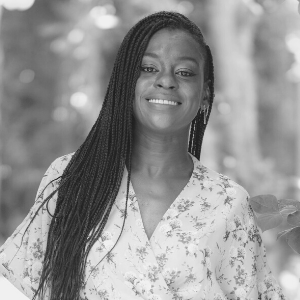 |
Sophia Bazile is an independent foresight researcher and Founder of FLYP (Futures Literate Youth and Professionals) |
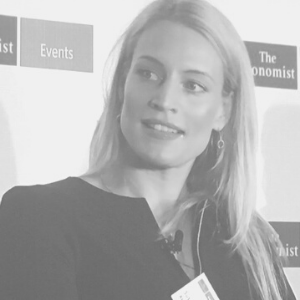 |
Dr. Susann Roth is the foresight and futures lead at the Asian Development Bank. |
 |
Dr. Jared Cooney Horvath is a Harvard Neuroscientist and the Director at LME. |
Artwork:
Feature illustration and ori


